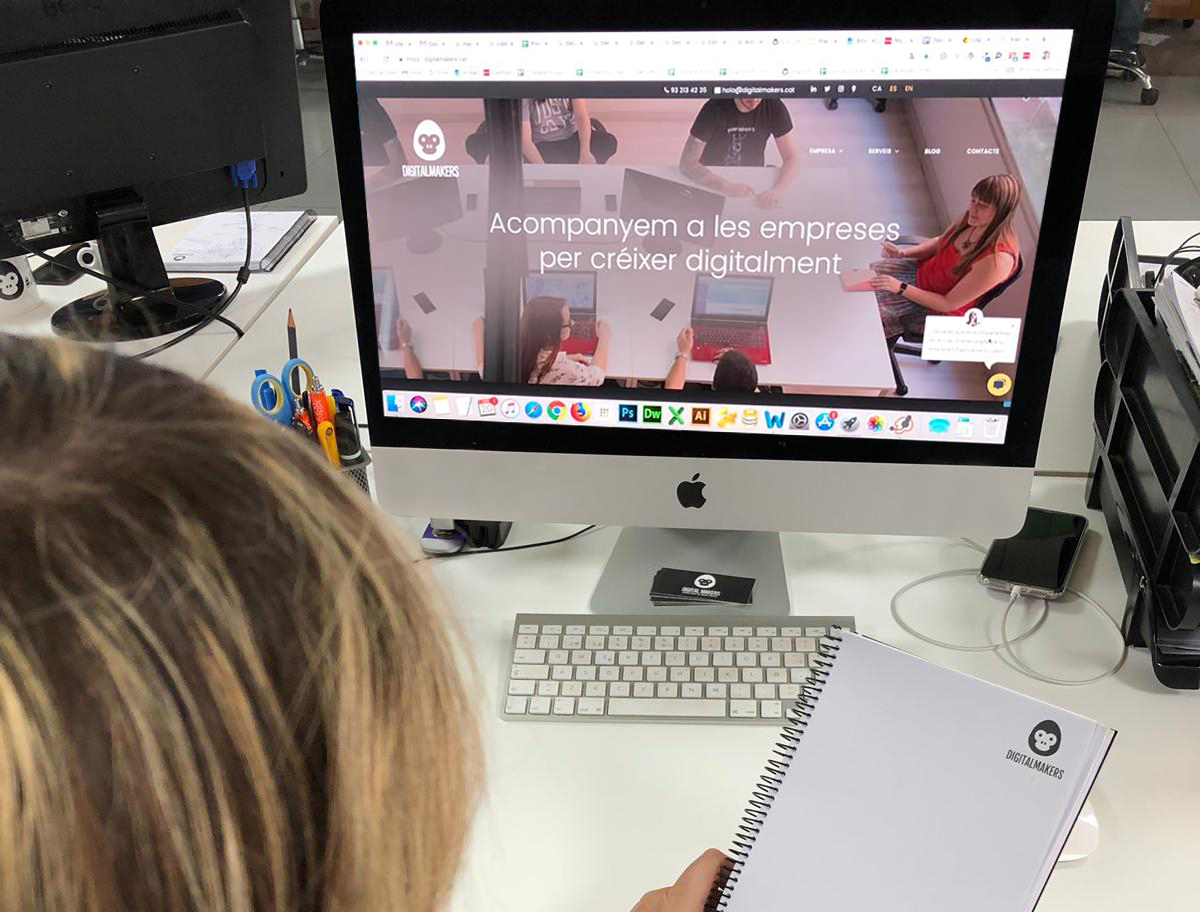In this article, we want to discuss some key aspects you should consider when creating the perfect corporate website and offer some advice to help your company’s page positively impact your business results.
As you know, a corporate website is one of the major challenges for any company when it comes to digital strategy. After all, the website serves as a gateway — a place to explain who you are, what services or products you offer, generate leads, inform your buyer persona how they can contact you, and more.
It is common for companies to spend hours reflecting on choosing a CMS, conceptualizing the website, organizing information, searching for the best design, and so on. In fact, as we have explained before, the website is a living tool that requires constant iterations and improvements, always guided by analytics, the achievement of your objectives, and user experience.
Therefore, to assist you in all those "discussions" you’ve probably had, at DigitalMakers we want to share some important considerations you should keep in mind when creating or redesigning your corporate website:
1- First impression.
As in many areas of life, the first impression is crucial. Your buyer persona must immediately understand, within the first two seconds, the company's value proposition. Placing a large, clear phrase that summarizes this value proposition will help grab their attention.
2- Visual appearance.
Following the importance of first impressions and visual impact, graphic design is another key element. The design should be attractive, polished, and modern — qualities that are valued and create a positive perception of your company.
Your goal should be that when a buyer persona lands on your website, they quickly grasp who you are through the graphic elements and understand your value proposition. A positive impression will likely encourage them to spend more time reading your information. This leads us to the third point.
3- Structure.
Appearance is important for attraction, but remember that potential clients come to your corporate website seeking information. In today’s fast-paced internet world, if users don’t find what they need quickly, they move on. Hence, a clear and intuitive structure is essential for a good user experience. The content tree will depend on your company, but starting with basics such as About Us, Services, and Contact methods is a good approach. Then personalize it based on what you consider relevant. Asking yourself "What does my buyer persona look for?" can help structure content to provide value and enhance user experience.
4- Content.
You’ve attracted the user and helped them find content, so what’s next? It’s essential to provide relevant content, speak their language, use short and clear texts, and support the message with multimedia elements like images and videos when possible. Considering the buyer journey will help you offer content that fits the stage your user is in.
5- Interaction.
If you have covered the first four steps, there’s a good chance to achieve the fifth: enabling the user to easily connect with your company and maintain contact via their preferred channels (social media like LinkedIn, Twitter, Instagram, YouTube, mailing lists, etc.). Including CTAs, contact options, social links, and similar elements can turn an anonymous visitor into a contact.
6- Leads.
What is the purpose of these interactions? The ultimate goal is to impact the buyer persona about 10 times. Always with relevant content so that when they need to buy or hire a service, they remember you and contact you. Using inbound strategies helps maintain these touches and increases the chances of conversion.
7- Mobile experience.
In a world where most users browse from mobile devices, your corporate website must be mobile-optimized. This includes responsive design adapting to different screen sizes, fast loading times, and simple navigation. A poor mobile experience can cause users to leave quickly, losing valuable opportunities.
8- Technical aspects and security.
Besides design and content, don’t overlook security and technical factors. Your site should have an SSL certificate to ensure secure connections, comply with data protection regulations, and be accessible to all users, including those with disabilities. These elements build trust and improve your company’s reputation.
9- Metrics and analysis.
To know if your website is performing well, measuring results is key. Use analytics tools to track bounce rates, average visit duration, pages per session, and conversions. This data helps you understand user behavior and make informed decisions for continuous improvement.
10- Success stories or testimonials page.
If possible, adding a testimonials or success stories page will help enhance credibility and brand recognition. This allows you not only to explain what you do but also to show it through your clients’ experiences.
11- Google and SEO.
Organic search is a major source of visitors. Users search on Google, and the search engine directs them to your site. Therefore, working on SEO — optimizing your site to improve visibility — is crucial each time you prepare new content.
That’s all for now. We hope these tips help you understand the key elements to focus on when working on your corporate website. As mentioned, it is a living tool that requires constant iteration, and there will always be new points to improve. But if you have these eleven points clear, you will have accomplished a lot.
Finally, as always, if you think we can help you with anything, feel free to contact us. We’ll be happy to assist you.












